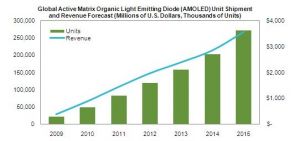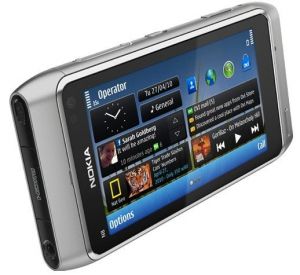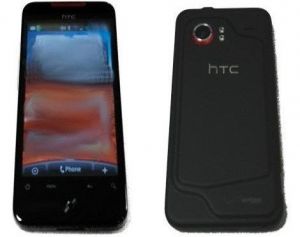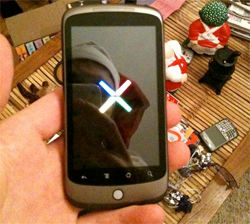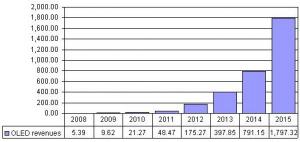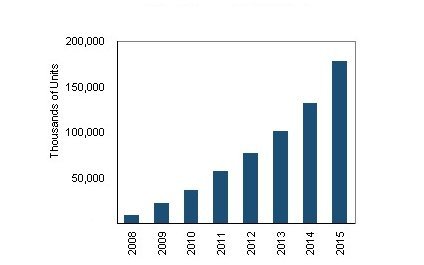After examining Sony Corp.’s 11-inch Organic Light Emitting Diode (OLED) television exhibited here at iSuppli Corp.’s Flat Information Displays (FID) 2007 conference last week, there is no denying how stunning the picture is. But at just 11-inches, it’s hard to imagine a family gathering around it to watch a DVD or television show.
But because the OLED-TV market is still in its infancy, with the Sony set being the first to be manufactured and sold to consumers, it’s unreasonable to expect it to compete effectively with Liquid Crystal Display (LCD) or Plasma Display Panel (PDP) televisions at this time. However, this begs the question: Will OLED TV ever be able to match up with LCD and PDP televisions?
It will be a challenge for OLED to catch up, given the investments that have been put into the other technologies, said Paul Semenza, vice president of displays at iSuppli Corp., speaking at FID 2007 last week. But there is no doubt about its performance and there is a lot of potential for the display technology, maybe in mobile applications.
With Sony being the first to throw its hat into the OLED-TV ring, due to its introduction of the 11-inch set this month in Japan at a price of $1,800, shipment volumes are expected to be very small, targeting a small niche of well-heeled, tech-savvy consumers. And even at such a high price, Sony indicated that it is taking a loss on the sale of each OLED set, according to Vinita Jakhanwal, principal analyst for mobile displays at iSuppli.
A few more brands are likely to enter the OLED-TV market in 2009, including Toshiba Corp. and Panasonic Corp. The major motivation for these companies’ entrance into the market is to make a statement to the industry that they are capable of producing OLED TVs, Jakhanwal added.
OLED problems and benefits
Semenza stressed that despite the obstacles, iSuppli does not discount the prospects and potential of OLED technology. However, there are a number of fundamental technology and market challenges that must be resolved before OLEDs can make a real impact in the market. One of these challenges is the fact that Active-Matrix OLED (AMOLED) panel manufacturing is still an inefficient process, Jakhanwal said. As the size of OLED displays becomes larger, the yields and manufacturing losses also get larger.
As a result, AMOLED products are going to be small-sized displays, for applications such as mobile phones and Personal Media Players (PMPs) for a few more years, Jakhanwal said. OLED suppliers still are struggling with improving yield rates and low manufacturing efficiencies for small-sized displays.
Furthermore, OLED material lifetimes are still an issue for products that require long lifetimes such as televisions. Add to this the fact that AMOLED suppliers cannot guarantee high volumes because the technology is coming from a single source.
However, OLED TV has a number of great upsides, including:
- OLED TVs use no backlights, so they offer potential power-savings benefits compared to other technologies.
- Because they have no backlights and use only a single glass substrate, OLED TVs can be very thin.
- The response time for OLED TVs is very fast, so there is no motion blur while watching television.
- OLED TVs have a much richer color gamut than competing display technologies.
iSuppli forecasts the global OLED TV market will reach 2.8 million units by 2013, managing a Compound Annual Growth Rate (CAGR) of 212.3 percent from just 3,000 units in 2007. In terms of global revenue, OLED TV will hit $1.4 billion by 2013, increasing at a CAGR of 206.8 percent from $2 million in 2007.
Potential is everything
Because OLEDs already serve as small panels for mobile handsets, PMPs and other small handheld devices, it is safe to assume OLED TVs could be a natural fit for automotive infotainment, mobile television, kitchen televisions or other consumer electronics devices that want to add small-screen sets.
The main challenge for the OLED-TV industry is making large-enough panels that could be sold at reasonable prices in order to compete against the other television technologies. Still, iSuppli believes that OLED TV is promising in the long term. Reducing power consumption, extending lifetimes, achieving larger sizes and attaining reasonable pricing eventually will help OLED TV to be competitive, but in the meantime, it will find a place in applications that require small sets.
